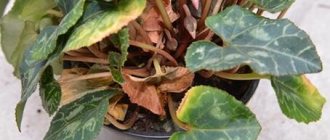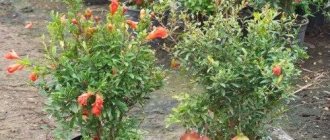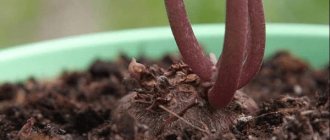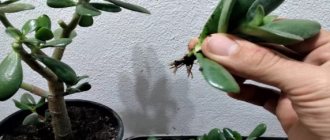Cyclamen is a picturesque flower native to southern countries. It is too cold for it outside in our climate, so the flower is grown in Russia as a houseplant. Cyclamen is quite whimsical and capricious, and its reproduction is especially difficult. In the article we will learn all the ways in which you can propagate a flower yourself at home, find out how to care for the plant after planting and what problems are likely.
A little about the plant
Two types of cyclamen are grown indoors:
- European;
- Persian.
Let's talk about them in a little more detail.
European
The tubers of this variety have a diameter of 10 cm, their shape is spherical, slightly flattened on the sides, and sometimes elongated. The foliage of the plant is dark, round in shape. The upper surface of the leaves has a silvery pattern, and the lower part has a reddish tint.
The second name of the European cyclamen is Purple. It can be grown up to 30 cm in height. It blooms in spring and summer with pink, white, purple flowers, depending on the variety. European cyclamen can be propagated by leaves, although not without difficulty.
Persian
The plant boasts large tubers, reaching a diameter of 15 cm. The foliage is also large, evenly green below, and with a silver pattern on top.
Persian cyclamen blooms in winter, which gives it an advantage over European cyclamen. But this variety cannot be propagated by leaves.
Miracle flower
In Europe, back in the 16th century, a miracle flower was displayed in the botanical garden of Queen Elizabeth I. Then for some reason they forgot about it, and centuries later, scientists and breeders bred more than 20 varieties of hybrids and species of this perennial plant. Cyclamen grows in Africa, Iran, Spain, and can often be found in Turkey. But in order to “tame” cyclamen in your apartment, it is advisable to use only two of its types - Persian and European. A hybrid of these two species, Cyclamen Mix, is also excellent for indoor conditions.
Tuber division
Only the tuber of an adult plant can be divided, but only after flowering. Usually the procedure is carried out during the next flower transplant.
Procedure
- Cyclamen is carefully dug out of the ground and dried.
- The tuber of the plant is divided into several parts with a sharp, clean knife. It is important to make sure that each part gets its own roots and bud.
- The cut area is sprinkled with charcoal or ash to protect against infection.
- The separated parts are placed in separate containers and watered.
Important: when caring for rooted cuttings, you should not allow the soil to overflow, as parts of the tuber can easily rot because of this.
Daughter tubers (babies)
Next to the mother tuber, the European cyclamen eventually forms so-called children - daughter nodules, which can be used as full-fledged planting material.
Procedure
- After flowering, adult cyclamen is removed from the ground.
- Daughter shoots are separated from the mother tuber.
- After separation, the children are dried, disinfected if necessary, then they should be seated in separate pots.
- The entire tuber must be underground
- Immediately after planting, the tubers are well watered to facilitate the rooting process. You should know that the roots will grow over the entire surface of the child, and not just from below.
Rosettes
One of the most effective and most commonly used methods of propagating cyclamen. Tuberous shoots are called rosettes or horns - excellent planting material. You should take shoots only from adult cyclamens that have already bloomed several times: in this case, the likelihood of survival will be greatest.
Procedure
- The horn is broken off from the mother tuber and planted in a moistened substrate. All the horns cannot be torn off at once: from such barbarity the mother plant may die. Tear off only one shoot from the tuber, no more.
- The top of the container is covered with film to create the effect of a greenhouse inside. The container should be kept at room temperature.
- After 15 days, with regular ventilation and watering, the horn sprouts roots.
- After the roots appear, the shelter is removed and care is carried out as for a full-fledged plant.
Attention: this method is suitable for European cyclamens. In Persian species, the rosettes practically do not take root (as well as the leaves).
Reproduction of cyclamen
This plant can be propagated by several methods:
- tuber division;
- using seeds;
- propagation by rosettes;
- planting leaves.
Each of the above methods has its own characteristics, advantages and disadvantages. The simplest and most effective method among flower growers is considered to be the method of propagation by rosettes. Planting tubers and seeds is more difficult, but these methods are also often practiced.
Seeds
This procedure is lengthy, but, nevertheless, due to the complexity of vegetative propagation, gardeners often have to resort to it. Note that Persian cyclamen reproduces at home mainly in this way.
It is recommended to plant seeds at the end of March. Thus, during the period of active growth, the seedlings will not require additional lighting: in the summer there is already a lot of sun.
Seed selection
To increase the likelihood of successful seed germination, it is important to choose them wisely from the beginning:
- when purchasing, pay attention to the type of cyclamen, its variety;
- check whether the seeds are intact and not covered with mold or fungus;
- check the expiration date of the planting material.
If possible, you can collect seeds from an existing adult cyclamen with your own hands. Typically, ripe seeds acquire an orange tint.
But if you are going to use seeds collected yourself, you should know that only those that have previously been pollinated will sprout. The procedure is simple and can be done either by hand or with a soft brush (watercolor is fine).
Do not wait until the box is overripe and the seeds fall to the ground. Collect them in advance: you just need to pick the box and put it on a plate to fully ripen and open. The collected planting material in the form of small brown seeds in a paper bag is stored in the refrigerator until autumn.
Procedure
- Before planting, the seeds are soaked in water for a day, laid out on abundantly moistened cotton pads. Add water when the cotton wool starts to dry out.
- This is followed by treatment with a root stimulant: the seeds are soaked for 12 hours in a solution diluted according to the instructions.
- This is followed by sowing into previously prepared and moistened soil. For planting you need a suitable container: it should be wide and shallow. The composition of the soil for sowing seeds should be as follows: peat, perlite/vermiculite, leaf soil.
- The seeds are not buried, but simply laid out carefully and as evenly as possible on the surface of the substrate. Try to maintain a distance of at least 4 cm between seeds.
- Sprinkle the seeds on top with a 1 cm layer of soil.
- The container is covered with film and glass on top to create a greenhouse effect inside. Seeds must germinate in darkness and high humidity: the protective film must be black and opaque.
- The optimum temperature is around +18 degrees. When germinating seeds in lower temperatures, the plant will flower later. And if the temperature is higher, seedlings will appear later.
- When seedlings emerge, the shelter should be removed to allow the plants access to air and sun. Do not expose germinating seeds to drafts or sudden changes in temperature. Once every two days, remove the protection and ventilate the greenhouse.
- One to three months after planting, young cyclamens begin to develop their first leaves, and their own tubers begin to form underground. It's time to pick.
- The strongest and most viable seedlings are selected: they are planted in separate pots to be grown as independent plants. Picking is done after the seedlings have acquired two or three true leaves. Transplanted small nodules of young cyclamens should be completely covered with soil.
- After picking, the seedlings are grown. And after six months they can be planted in permanent pots.
- When the plants reach six months of age, their first feeding is done. For this purpose, a complex mineral composition is usually used, diluted in a concentration reduced by half.
- Flowering of cyclamen obtained from seeds will occur only after a year and a half. Therefore, you will have to be patient.
Adviсe
If you use ingredients taken from the garden, be sure to disinfect them before use. This is quite simple to do: you just need to pour boiling water over the soil or bake it on a baking sheet in the oven.
The planting container must have good drainage. Therefore, before putting soil into the container, first lay expanded clay drainage or a layer of small foam balls on the bottom. The height of the drainage should be 2-2.5 cm and its purpose is to protect the roots of young seedlings from waterlogging and rotting. The substrate is poured on top in a layer of 6-7 cm. Spill the soil with water so that excess liquid drains abundantly from the drainage holes
Young seedlings will not grow quickly at first. But there is no need to despair: it is during this period that they actively form a powerful root system and grow tubers.
Propagation of cyclamen using seeds
This method is often used at home to propagate a flower. For the best results, it is necessary to take a responsible approach to the choice of planting material. When selecting seeds, you need to pay attention to the following factors:
- what type of cyclamen?
- Are the seeds intact and free from deformation and damage?
- are there any signs of freezing and diseases on the seeds;
- if planting material is purchased in a store, then you should definitely look at the expiration date, which is most often 2 years for cyclamen flowers;
- there should be no damage on the packaging, all inscriptions on it should be clearly visible; if this is not the case, it means that the seeds were stored incorrectly and it is better not to purchase them.
If you already have an adult cyclamen flower at home, then you can take suitable seeds from it for propagation. This plant is self-pollinating, so the seeds set without outside help. But you can do artificial cross-pollination.
Is it possible to propagate by leaf?
Let's say right away that this option for vegetative propagation of cyclamen is quite possible, but it requires some effort: it is unlikely that a beginner will be able to do it. The main difficulty is that cyclamen leaves do not take root well. It often happens that after standing in water or soil for some time, the lower part of the leaf simply rots, and the upper part dries out.
Therefore, this method is used only by very experienced flower growers or real “lucky” people who succeed in everything they undertake. Below are some useful tips that will help you root the leaf more efficiently.
- Try to find a leaf on a plant that has small roots (fingers). Such a leaf is much more likely to take root.
- Only European cyclamen can be propagated in this way. Persian does not have leaves with spines, so this method is excluded for it.
Care
After rooting cyclamen from a leaf, it needs to be cared for like an ordinary plant. This flower is undemanding, the main thing is not to forget to water it. But some problems may still arise:
- Yellowing of leaves. This indicates dry air and high temperatures, which negatively affect the plant. You need to move the cyclamen to the north window and spray it more often.
- Rotting of petioles. Rot is very harmful to plants. She talks about damp soil and lack of drainage. If the rot spreads, replanting will be necessary, but you can usually solve the problem by reducing watering.
- Leaves that curl into tubes. This indicates that the plant has been infected by a cyclamen mite and requires treatment with insecticides.
How to care
Let's find out what care and conditions need to be provided to young cyclamens for their successful development, growth and further lush flowering.
Priming
For young cyclamen, the following soil composition is considered optimal:
- humus;
- sand;
- peat;
- turf substrate;
- leaf soil.
All components should be taken approximately equally.
Lighting
Provide flowers with abundant but diffused light. Direct rays should not be allowed to hit the cyclamen petals, as this often leads to their burns and wilting.
It is best to place cyclamen on windows on the east or west side of the house. If there are no windows other than southern ones, shade the plant from aggressive midday rays. Do not forget about ventilating the room: it is important that during this procedure the cyclamen is not exposed to a draft.
Temperature
Cyclamen, despite their southern origin, feel better at relatively cool temperatures. It is ideal to grow them at +18 degrees. In winter, we recommend keeping the plant at a lower temperature: +10-12 degrees. At higher temperatures, cyclamen often loses its leaves or turns very yellow.
You should not place the plant near working heating radiators: such a hot neighborhood can lead to the death of cyclamen.
Watering
Young cyclamens need moisturizing treatments regularly. However, excessive watering is unacceptable: this can lead to rotting of the nodule root system of plants. Cyclamen will survive a slight drought much easier than a flood.
Water with water at room temperature, but not cold (not lower than +16 degrees). Make sure that the pot is equipped with drainage holes at the bottom: this will prevent stagnation of water. Before the cyclamen flowers appear, it is permissible to water it in the pot. After the buds appear, it is recommended to water using a tray.
During the dormant period in winter, watering is reduced, but not stopped at all. Drying out of the substrate is unacceptable. You should use only clean water, soft, settled, without chlorine.
The plant does not need spraying. If dust has accumulated on the leaves, simply wipe it off gently with a slightly damp sponge. Or simply shake off each leaf with a soft brush.
Top dressing
In order for the plant to feel good and bloom successfully, it is necessary to feed it. The frequency of fertilization is twice a month during the growing season. We recommend using ready-made mineral fertilizers.
In winter, fertilizers are not applied: cyclamen needs additional nutrition only during the growing season. In the spring, add nitrogen to the soil so that cyclamen quickly forms lush greenery. And before flowering, it doesn’t hurt to feed the plant with a special composition to stimulate budding. The drug Kemira Lux is perfect for this purpose.
Fertilize no more than twice a month, since excess fertilizer is no less harmful to cyclamen than too little. If you overfeed a plant, its flower stalks are shortened, its buds become smaller, and its petals become dull. If overfeeding is severe, even an emergency transplant may be required.
Transfer
If the cyclamen has outgrown the old pot, you need to find a new one for it. Keep in mind that the new container should not be too large: a maximum of 2-3 cm larger in diameter than the previous one. If you plant the plant in a pot that is too large, the cyclamen will rapidly develop roots and foliage, but will have to wait a long time for flowering.
When transplanting, European and Persian cyclamen bulbs are buried in different ways:
- European entirely;
- two-thirds Persian.
This is due to the fact that in the European cyclamen the roots grow over the entire surface of the onion, while in the Persian one only in its lower part.
Possible problems
Let's find out what problems can be encountered during the reproduction and cultivation of cyclamen, and how to cope with these problems.
Yellowing of foliage
This usually happens if cyclamen is kept at too high a temperature or in dry air conditions. Often the reasons are combined. To restore the plant to its former beauty, you need to remove it away from radiators, place it in a room with an average temperature (not higher than +18 degrees), and spray the air around it more often.
If the flowers are quite healthy, but the foliage has turned yellow, most likely the problem is that the temperature is too high. Lower it to +18 degrees, and everything will return to normal. Sometimes the foliage turns yellow due to dry soil. This happens, as is clear, due to irregular watering.
And if the leaves begin to turn yellow and fall off after flowering, there is nothing to worry about. This is a natural process associated with the transition of cyclamen into a dormant period. However, if the process becomes too strong, place the plant in a cooler room.
Root rotting
This dangerous problem occurs when the plant is overwatered. In addition, when watering, you should not pour water on the rosette: this can cause the core of the flower to rot and become moldy. To avoid problems, water cyclamen sparingly. To keep the soil moist longer, place the pot on a tray with wet expanded clay.
Leaf deformation
Typically, leaves lose shape and curl when attacked by pests. The cyclamen mite most often affects the flower: the miniature pest is difficult to notice with the naked eye. The mite leads to curvature of flower stalks, deformation of leaves, and loss of decorativeness by buds. If damage has already occurred, all diseased leaves should be removed immediately and then treated with cyclamen with an insecticide.
Gray rot
The disease occurs due to keeping the flower in conditions of high humidity. Especially often if high humidity is combined with low air temperature. To prevent the appearance of dangerous fungus, it is recommended to ventilate the room more often and keep cyclamen at the optimal temperature (+18 degrees).
We learned how cyclamen reproduces at home. Not the simplest procedure, however, several options are possible. If the steps are carried out correctly, everything will work out, and soon the young cyclamen will delight you with its first flowering.











